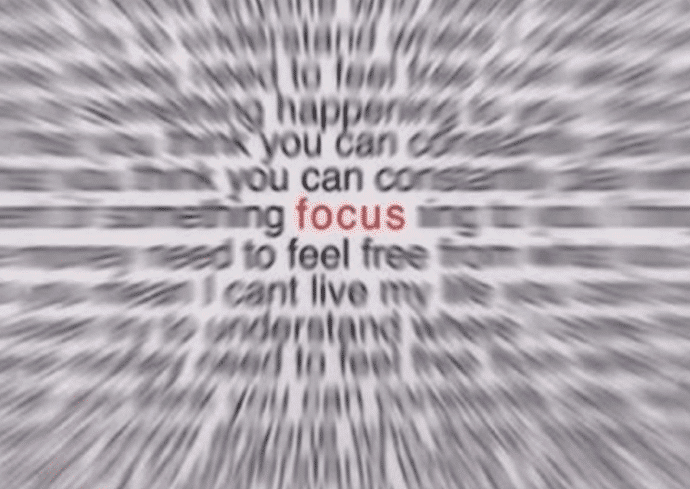In Life, as in Photography, Focus & Zoom: Bar Talk With Eric Bartosz
In our own lives, continuous evaluation allows us to pivot and evolve. History is not destiny, and if you don’t like your view, you have the ability to adjust the focus!


If I were to say to you, “that was a Kodak moment,” would you know what I was talking about? For anyone under 20 years old, film photography was pretty much obsolete upon your arrival, and it’s likely all those first-year memories (Kodak moments!) were captured digitally. I’m an avid photographer and continue to marvel at how fast and far technology has advanced in recent years. It’s safe to say that the camera technology most of us carry around as an added feature on our cell phones would surpass many of the top-selling, big-dollar cameras on the market not that long ago. It’s truly a fantastic time to be a photography enthusiast, and it will be interesting to see what exciting developments, images and art are brought forth in the coming years.
Think about it for a second; this is the first generation of virtually every kid being a ‘camera native,’ where they grow up as a junior photographer owning high-end photo technology at a young age and with no limitation in the form of running out of film.
As Kodak knows painfully well, most of the millions of cellphone pics taken every day will only have a digital existence.
Compared to the Kodak 110 I had at 12 years old, my daughter’s iPhone has the firepower of a pro-level photo studio. As is often the case with technology, the many conveniences and ease of use sometimes comes at the expense of skillsets that become automated. For example, focus and zoom are not something most of us need to worry about when taking a shot with our cell phones. Hit the button, and the settings become automatically optimized for the best image, whatever subject you’re aiming at, and in any environment and lighting level.
Besides my interest in photography, I bring the topic up as I see the focus and zoom automation with our cameras as analogous to much of our daily lives in 2021. Specifically, unless we are actively and consciously involved with the ‘camera settings’ (our daily habits), we may not focus on what we consider our true priorities. Let’s look at what ‘focus’ means. In photography and life, it’s essentially the same: providing clear, visual definition to the subject of attention and interest.
The future of local coverage depends on you.
Support Our News


This is the point where it’s easy to drift off course. We tend to be very busy multitasking every day, and we often don’t give proper focus to the things we consider to be the most critical areas. Essentially, we tend to scan the whole panorama of our to-do list each day and end up reacting to whatever seems most urgent at the moment.
This tendency is where thinking about using a mental zoom function along with the focus setting can provide some unique perspective. When you zoom all the way out, you can get a birds-eye view of all the different roles, responsibilities, goals, priorities and commitments you have in your life. When we zoom in, we can put any one of those particular things into focus and give it clear definition. Like the zoom on the camera, we can get the full and wide shot to take in the whole landscape, and we can get in tight and close in order to identify the details worthy of additional attention.
Since this is the start of May and 1/3rd of 2021 is already in the history books, it’s a perfect time for a ‘focus and zoom’ exercise. Here’s my suggestion; an experiment that I think you will find not only enlightening but also worthwhile in terms of how you channel your energies and attention in the coming months.
Step 1.
Grab your trusty pen and pad!
Step 2.
If someone–me, for instance–asked you to rank your five biggest goals/passions/hobbies/interests, what would they be? I know it’s not a question that comes up often, so give it some real thought! What lights up your circuits, and what do you wish you could do more of or more often? Assembling model ships in a bottle? Bird watching? Learning a new language? No wrong answers on this test.
List them in order on your pad, leaving a couple of lines between each one.
Step 3.
Think back to the last four months of 2021 and write down what you have done to advance/enjoy/develop/improve in those five areas. Be as honest and objective as possible. There are no right or wrong answers, and this is an exercise meant for your eyes only.
Step 4.
Review the answers to identify which areas have been left ‘out of focus’ and where you would like to make some changes in the coming months. Having this written summary helps provide a clear and concise outline of what you’re passionate about, and in turn, shows where you should be zooming in with your attention and time.
I’ll wrap up by coming full circle back to Kodak. They basically owned the camera market and refused to acknowledge digital photography was replacing film. In our own lives, continuous evaluation allows us to pivot and evolve. History is not destiny, and if you don’t like your view, you have the ability to adjust the focus!

Eric Bartosz is the founder of BAR40 and the author of the internationally-acclaimed book ‘BAR40: Achieving Personal Excellence.’ He lives in Center Valley with his wife Trish, daughter Riley and pug Piper, and serves the community as an Upper Saucon firefighter, a board member of Big Brothers Big Sisters of the Lehigh Valley and a local race organizer. Eric is a 20+ year runner and racer and can often be found logging miles on the Saucon Rail Trail.




